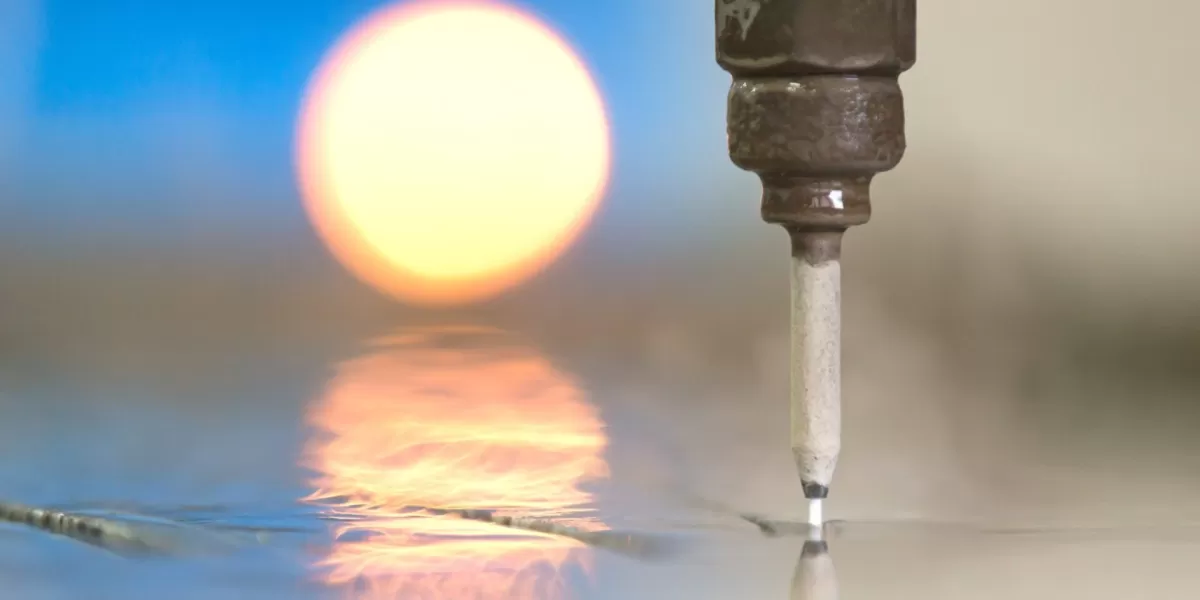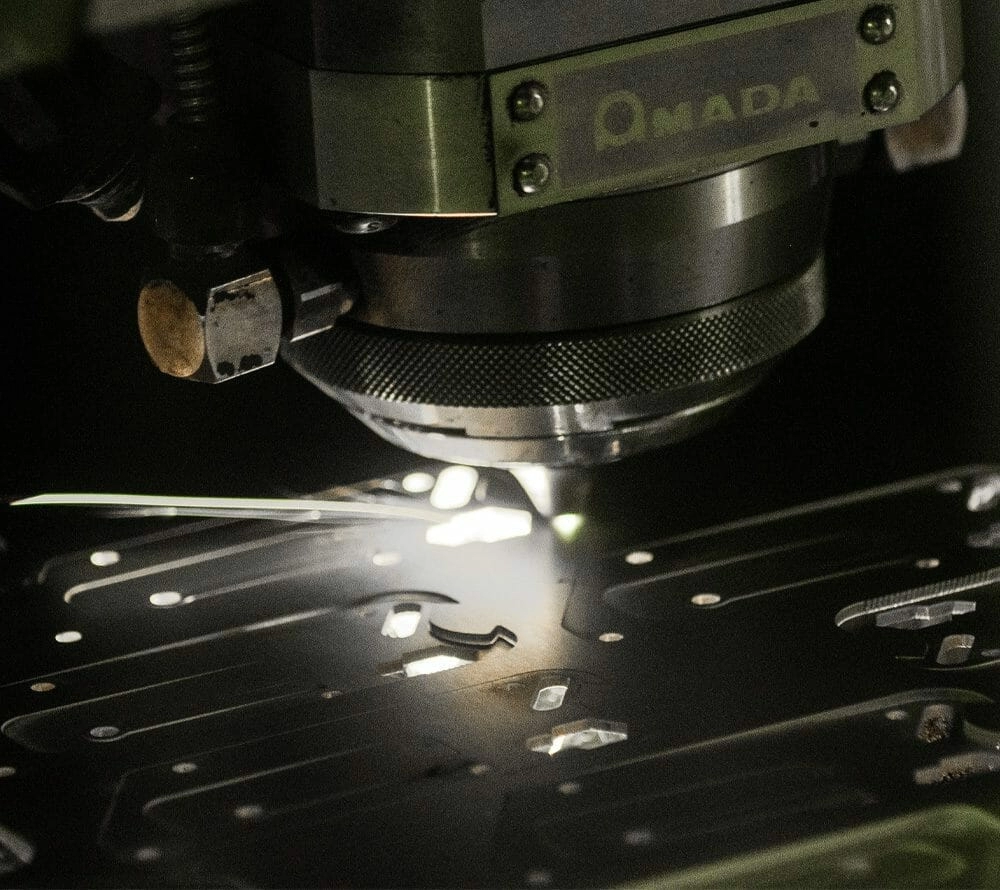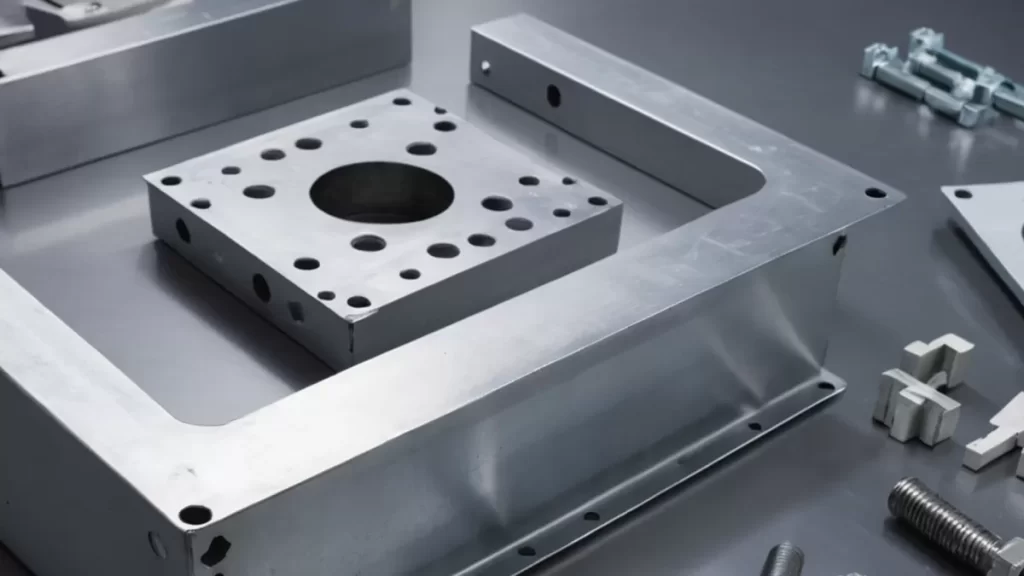Are you wondering what materials should be waterjet cut for your next project? Choosing the right materials can transform your fabrication process, delivering precision and efficiency that elevate your results.
As a leader in CNC waterjet cutting, HYCNC has helped countless businesses cut everything from stainless steel to carbon fiber with unmatched accuracy. In this guide, we’ll share expert insights on the best materials for waterjet cutting, why they shine, and how to pick the perfect one for your needs.
Ready to unlock the power of precision cutting? Let’s dive in!
Understanding Waterjet Cutting and Why Material Selection Is Critical
Waterjet cutting is a versatile and precise CNC machining process that uses a high-pressure stream of water, sometimes mixed with abrasive materials, to cut a wide range of materials. Unlike traditional cutting methods, waterjet cutting does not generate heat, which prevents material distortion and preserves the integrity of sensitive or heat-affected materials.
How Waterjet Cutting Works
Waterjet cutting operates by focusing a high-velocity jet of pure water or abrasive waterjet cutting mixture to slice through materials. The pressure can reach up to 60,000 psi or more, allowing the jet to cut cleanly and accurately without the burrs or deformation common in mechanical cutting.
There are two main types of waterjet cutting:
- Pure waterjet cutting uses only water and is ideal for softer materials like rubber or foam.
- Abrasive waterjet cutting adds abrasive particles (like garnet) for cutting tougher materials such as metals and stone.
Why Material Selection Is Critical for Waterjet Cutting
Choosing the right material for waterjet cutting is crucial for achieving the best results. Some materials respond better to the cutting process, while others may pose challenges or reduce efficiency. Material properties like hardness, thickness, and brittleness influence how easily and cleanly they can be cut by a waterjet.
Key reasons why material selection matters include:
- Cut Quality: Softer or more malleable materials cut smoothly without chipping or rough edges.
- Cutting Speed: Some materials take longer to cut, affecting project timelines.
- Cost Efficiency: Using compatible materials reduces wear on the CNC waterjet cutting equipment and minimizes waste.
- Project Requirements: Different applications demand different materials, and waterjet cutting can handle a variety—from metals to composites to glass.
With waterjet cutting materials carefully chosen, projects benefit from precision cutting, minimal thermal damage, and clean edges—making it a top choice in industries ranging from aerospace to custom manufacturing.
For a deeper comparison of CNC cutting methods, check out our detailed guide on EDM vs Laser vs Waterjet vs Plasma CNC Cutting.
Best Materials for Waterjet Cutting
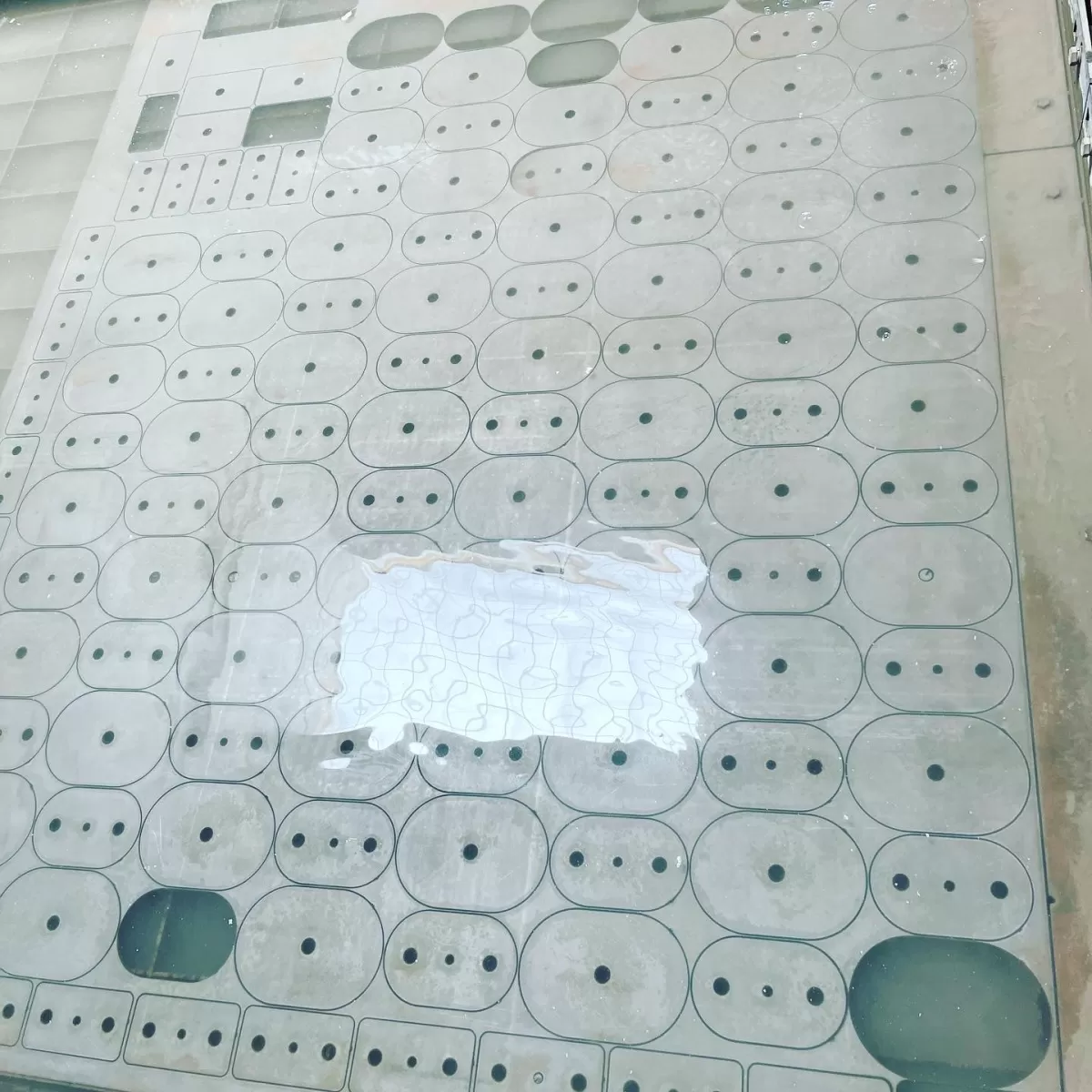
Waterjet cutting works well with a variety of materials, making it a versatile choice for many projects. Here’s a quick look at the best materials for waterjet cutting to help you decide what fits your needs.
Metals
Waterjet cutting is excellent for metals like:
- Steel (both stainless and mild steel)
- Aluminum
- Copper
- Titanium
- Brass
Because waterjets don’t generate heat, they avoid warping or weakening metal parts. This precision makes it a top choice for CNC waterjet cutting services dealing with metal fabrication.
Composites
Waterjets handle composites like:
- Carbon fiber
- Fiberglass
- Kevlar
These materials are tough and layered, but waterjet cutting delivers clean edges without damaging the fibers—something laser or plasma cutting often struggles with.
Glass and Stone
Cutting glass and stone with waterjet:
- Offers smooth, chip-free edges
- Works on quartz, granite, marble, and tempered glass
- Perfect for intricate shapes and patterns
Waterjet cutting these materials avoids cracking or shattering thanks to the cold cutting action.
Plastics and Rubber
For plastics and rubber, waterjet cutting is ideal because it:
- Cuts acrylic, polycarbonate, and PVC cleanly
- Handles rubber without melting or deforming
- Produces intricate and precise shapes
This is especially handy for custom parts, seals, gaskets, and prototypes.
Other Materials
Waterjet cutting also works well for:
- Foam
- Cork
- Leather
- Paper and cardboard
These materials benefit from precise, clean cuts without damage or tearing, useful in packaging and craft applications.
Choosing the right material for waterjet cutting ensures you get clean cuts, minimal waste, and better project outcomes. Keep these options in mind when planning your next job.
Materials to Avoid with Waterjet Cutting
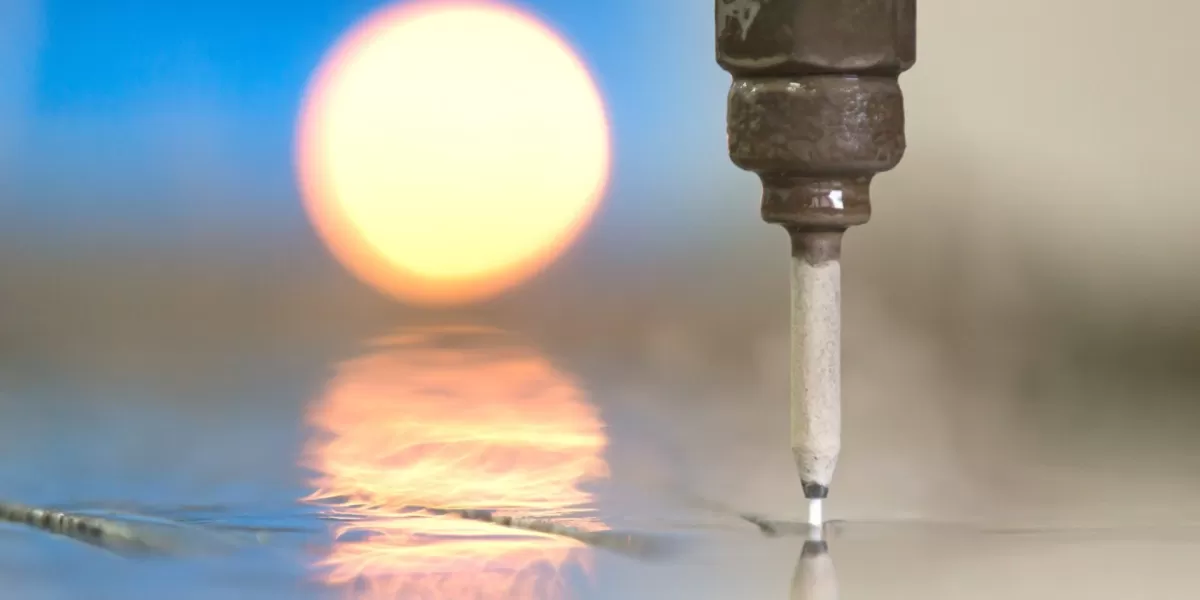
While waterjet cutting works great for many materials, there are some you should avoid to prevent damage to the material, the machine, or both. Knowing which materials don’t pair well with waterjet cutting saves time, money, and hassle.
Materials Unsuitable for Waterjet Cutting
- Tempered Glass: Unlike regular glass, tempered glass can shatter unpredictably under the pressure of a waterjet stream. Instead, it’s better to use other cutting methods for safety and precision.
- Thin Sheet Metals Under 0.02 Inches: Extremely thin metals can warp or bend because of the water pressure, making cuts inaccurate or causing material distortion.
- Certain Plastics Like PVC and ABS: Some plastics emit toxic fumes or melt under the heat generated during abrasive waterjet cutting. These can damage the machine and cause safety issues.
- Foam and Soft Rubber: These materials tend to absorb water and can deform rather than cut cleanly. They also clog the system more easily.
- Live Woods and Composite Woods with Glue: Some woods, especially those with adhesives or resins, may not cut cleanly because the glue can clog the nozzle and affect cutting quality.
Why These Materials Are Problematic
- Material Integrity Issues: Some materials crack, shatter, warp, or deform when exposed to the high-pressure water stream.
- Safety Concerns: Toxic fumes released from plastics like PVC or ABS can endanger operators.
- Machine Damage: Glue, foam, and certain plastics can clog or damage the nozzle, leading to costly repairs.
If you want to learn more about ideal materials for waterjet cutting or explore our range of suitable metals like mild steel and composites, check out our full materials section.
Choosing the right material upfront is key to getting clean, precise cuts without machine downtime or wasted material. Avoiding these problematic materials will ensure your CNC waterjet cutting experience runs smoothly.
Advantages of Waterjet Cutting for These Materials
Waterjet cutting offers distinct benefits when working with various materials, making it a popular choice for precise and clean cuts. Here’s why it stands out for metals, composites, glass, plastics, and more:
No Heat Affected Zones
Unlike laser or plasma cutting, waterjet cutting uses pure or abrasive waterjet cutting, which doesn’t generate heat. This means materials like metals and composites won’t suffer from warping, melting, or structural changes during the process. For sensitive materials such as glass and certain plastics, this is a major advantage that helps maintain integrity.
High Precision and Clean Edges
Waterjet cutting provides sharp, accurate cuts with smooth edges, reducing the need for secondary finishing. This precision is especially useful for intricate designs in metals or detailed cuts in composites. CNC waterjet cutting services ensure consistency, which is crucial for manufacturing and prototyping.
Versatility Across Materials
Whether it’s thick steel or delicate rubber, waterjet cutting handles a wide range of precision cutting materials without switching tools. This versatility saves time and money when your project involves multiple materials — from waterjet cutting metals like stainless steel to waterjet cutting plastics or even stone.
Environmentally Friendly
Waterjet cutting uses mostly water and a small amount of abrasive material, making it cleaner and more eco-friendly than other cutting methods that rely on gases or chemicals. For businesses and individuals aiming for sustainable manufacturing, it’s a smart choice.
Minimal Material Waste
Thanks to the narrow kerf (cut width), waterjet cutting reduces scrap and waste. This is a big plus for expensive materials like composites or specialty metals where minimizing waste helps control costs.
For those interested in comparing cutting technologies, check out our laser vs waterjet vs plasma CNC cutting contrast for deeper insights on when waterjet cutting is the best fit.
Overall, waterjet cutting combines precision, no heat impact, and adaptability, making it ideal for a wide range of materials and projects here in the US market.
Choosing the Right Material for Your Project with HYCNC
When it comes to waterjet cutting materials, picking the right one is essential for getting the best results. At HYCNC, we help you choose materials that work perfectly with our CNC waterjet cutting services, ensuring precision and quality every time.
Why Material Choice Matters
Not all materials cut equally well with waterjets. Some need abrasive waterjet cutting, while others do better with pure waterjet cutting. Understanding your material’s properties helps avoid issues like uneven edges or wasted time and money.
How HYCNC Helps You Get It Right
- Experience with a wide range of materials including metals, composites, glass, plastics, and stone
- Expert advice on which materials fit your design and budget
- Access to advanced CNC waterjet cutting tech that handles complex shapes and delicate surfaces
- Quick turnaround times tailored to your project needs
What To Consider When Choosing Materials
- Thickness and density: Some materials cut faster and cleaner than others
- Material brittleness: Fragile materials like glass need special care
- Project end-use: This influences whether you want sharp edges, smooth finishes, or structural integrity
Benefits of Partnering with HYCNC
By aligning your project with our best materials for waterjet cutting, you reduce material waste and improve accuracy. Our team makes sure you pick the right material so your parts come out exactly how you envision them—on time and within budget.
If you’re in the US and need reliable CNC machining combined with expert waterjet cutting, HYCNC is your go-to partner. We bring precision, efficiency, and the right material expertise together for your success.

